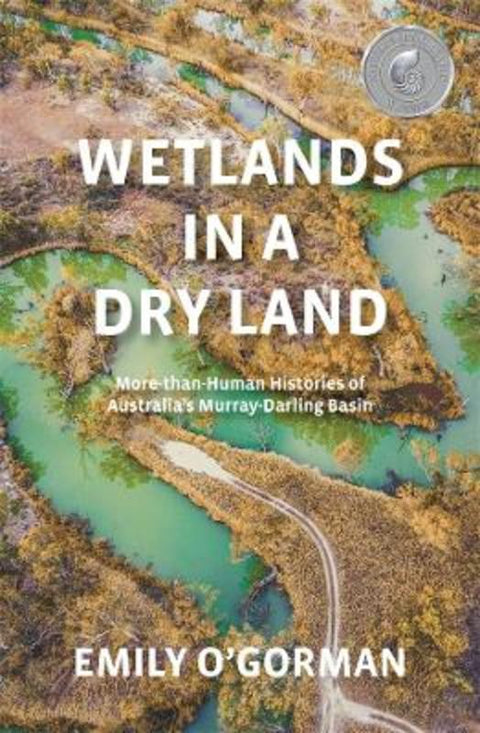
Wetlands in a Dry Land
More-than-Human Histories of Australia's Murray-Darling Basin
By Emily O'Gorman
product.options_with_values.size == 1: 1
product.available == false: false
block.settings.unavailable_variants == 'hide': show
target.option1: New
product.option1:
product.options_with_values: [{"name":"Condition","position":1,"values":["New"]}]
product group: 10
product type: Book
is_new_or_remainder_or_default_title? true
has_only_one_condition_option? true
New RRP:
In-stock. Available in-store. Learn more.
In-stock. Aims to ship within 2 - 6 business days. Learn more.
In-stock. Aims to ship within 1 business day. Learn more.
How have people and wetlands shaped each other in Australia's Murray-Darling Basin?
What counts as a wetland, especially in Australia, the driest inhabited continent on earth?
In the name of agriculture, urban growth and disease control, humans have drained, filled or otherwise destroyed nearly 87 percent of the world's wetlands over the past three centuries. Only recently have wetlands been widely recognised as worth preserving for their diverse plants, animals, insects, and their human histories.
Examining Australia's own Murray-Darling Basin, environmental historian Emily O'Gorman shows how people and animals have shaped wetlands since the late nineteenth century. O'Gorman draws on archival research and original interviews to illuminate how Aboriginal peoples acted then and now as custodians of the landscape, how the movements of water birds affected farmers and how mosquitoes have defied efforts to fully understand, let alone control, them.
Situating Australia's history within global environmental humanities conversations, O'Gorman argues that we need to understand wetlands as socioecological landscapes that transcend the nature-culture divide and to embrace non-Western ways of knowing and being. Only then can we begin to create sustainable relationships with, and futures for, the wetlands.
- ISBN:
- 9780522880618
- Format:
- Paperback / softback
- Pages:
- 288
- Published:
- Publisher:
- Melbourne University Press
- Imprint:
- Melbourne University Press
- Weight:
- 352 g

